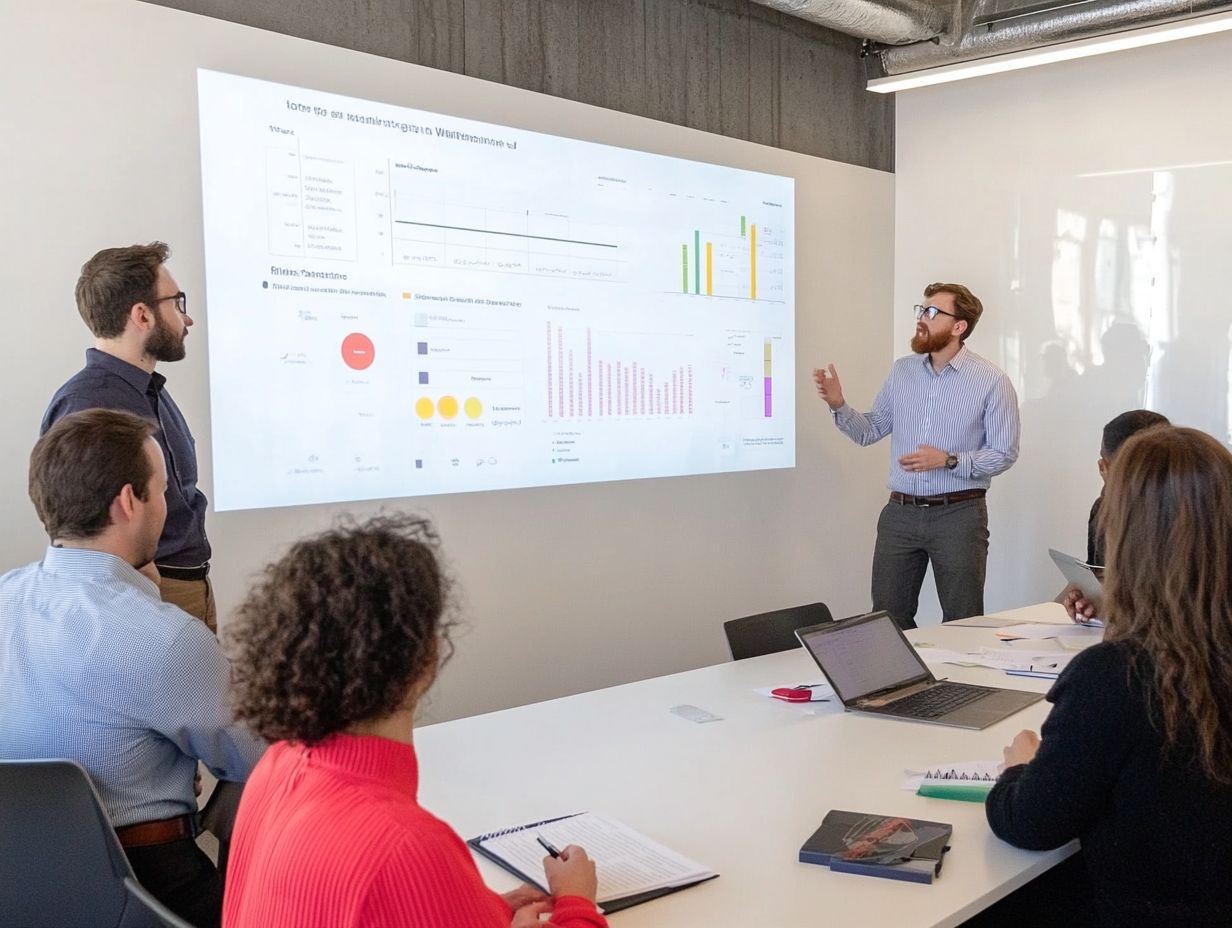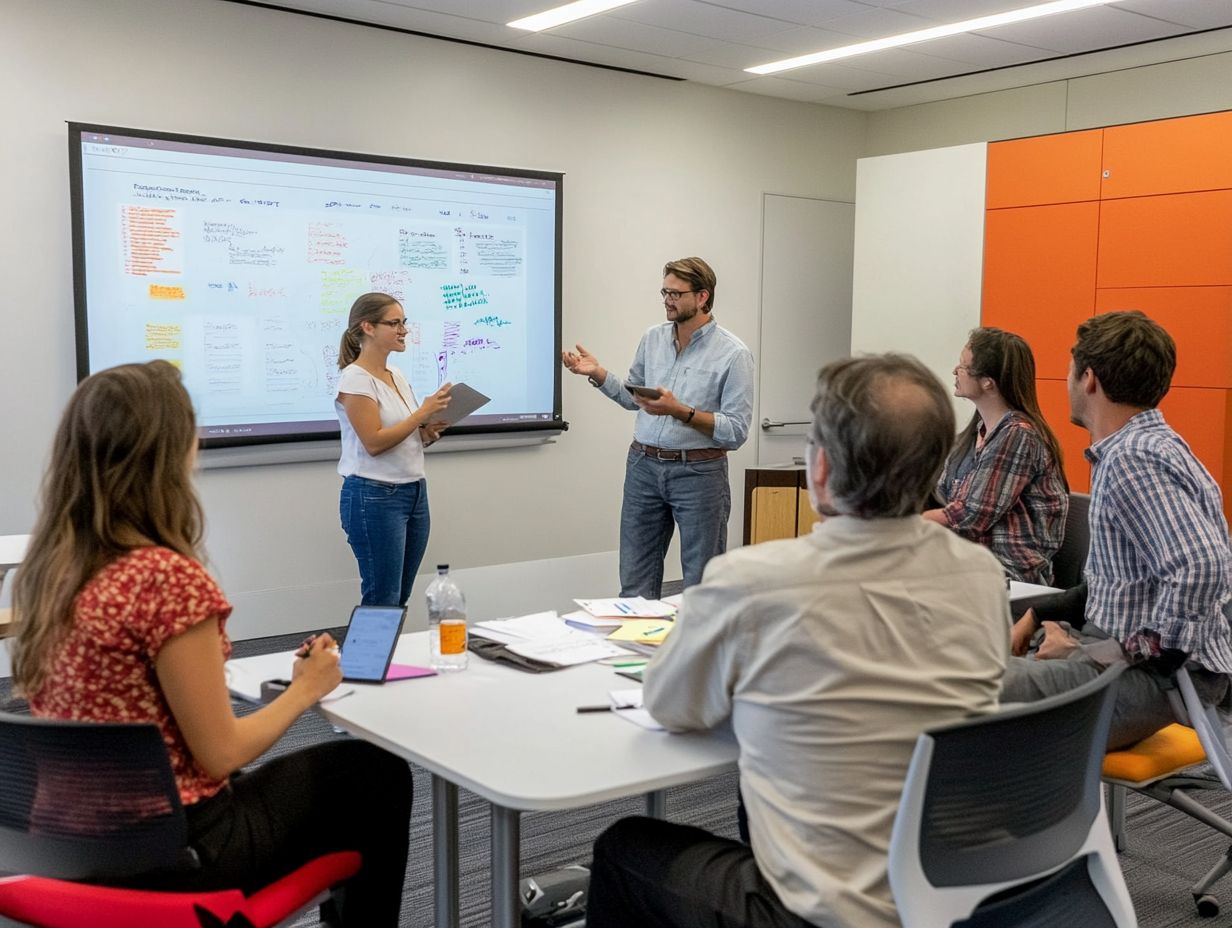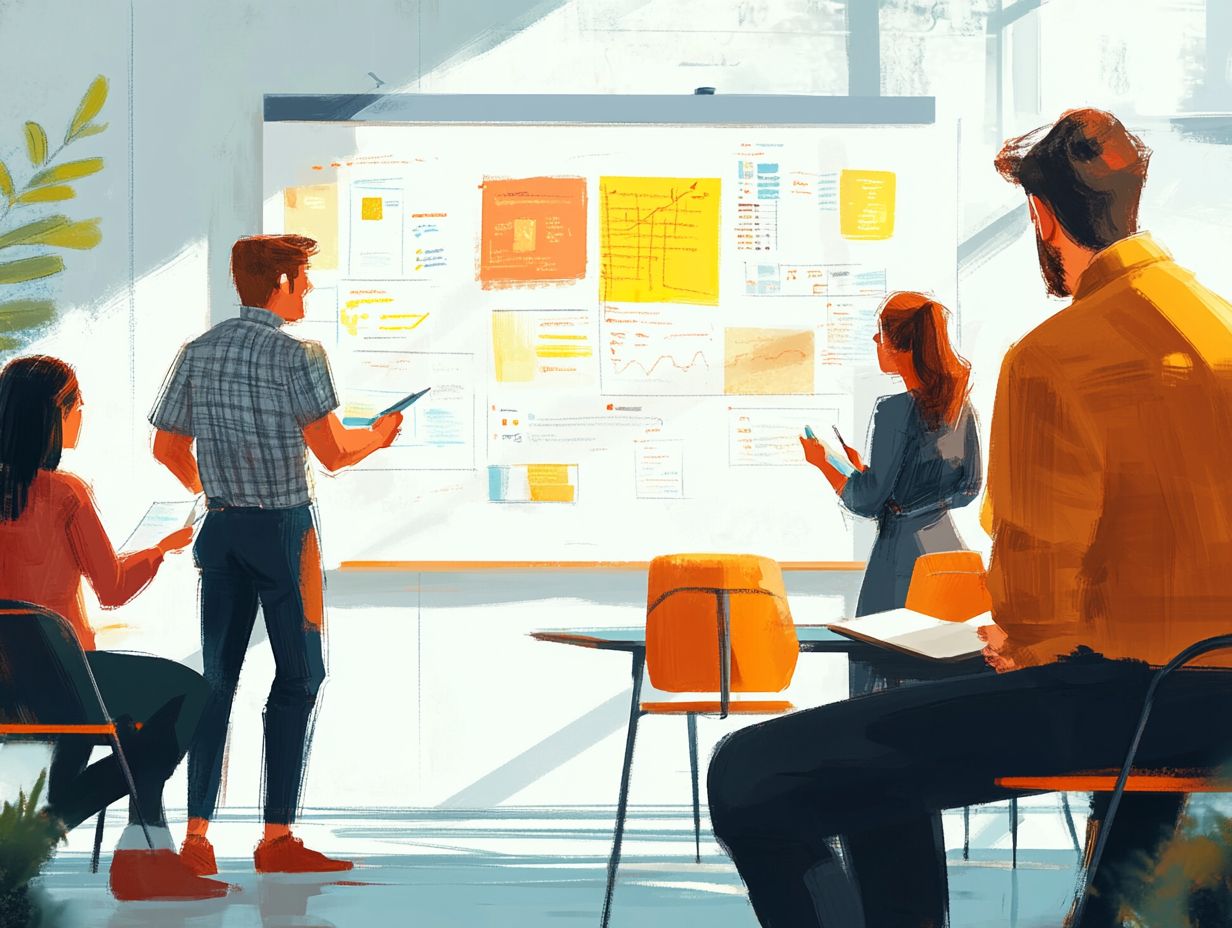5 Best Practices for Skill Enhancement Assessment
In today’s dynamic work environment, skill enhancement assessments help employees grow and benefit the organization.
This article delves into five best practices to ensure your assessments are effective and meaningful. By setting clear objectives and involving employees in the process, you’ll gain insights to navigate the complexities of skill assessments confidently.
This article also addresses common challenges and offers strategies to turn them into valuable opportunities for improvement.
Are you ready to take your skills to the next level?
Contents
Key Takeaways:

- Clearly define the objectives of the skill enhancement assessment.
- Utilize a variety of assessment methods for a comprehensive understanding.
- Involve employees in the assessment process for ownership of their development.
1. Set Clear Objectives for the Assessment
Establishing clear objectives for your training needs assessment is essential. This alignment ensures your assessment process matches organizational goals and identifies skill gaps that directly relate to necessary training programs for employee development.
To create specific, measurable objectives, start by analyzing performance data and pinpointing areas where employees struggle to meet expectations. Your objectives should emphasize quantifiable outcomes, such as improving technical skills by a specific percentage or boosting productivity within defined timelines.
By tying these goals to your company s strategic plan, you create a roadmap that addresses immediate skill deficiencies while aligning with long-term business objectives. This synergy provides a clear vision and acts as a benchmark for evaluating the effectiveness of your training initiatives, allowing for ongoing adjustments to meet evolving challenges.
2. Use a Combination of Assessment Methods
Utilizing a blend of assessment methods can significantly enhance your skills assessment process. This approach allows for gathering comprehensive data through tools like structured interviews, peer reviews, and assessments, which can be complemented by effective strategies for remote skill enhancement to identify learning needs.
This multifaceted strategy captures a broad spectrum of competencies and learning preferences, leading to a more accurate understanding of individual capabilities. For instance, structured interviews can reveal insights into a candidate s problem-solving skills, while peer reviews offer perspectives on teamwork and collaboration. Encouraging self-assessments invites individuals to reflect on their skills and areas for improvement.
By integrating these diverse methods, you build a holistic picture of training needs, ensuring no critical skills are overlooked and that your development efforts align with overarching business objectives.
3. Involve Employees in the Process
Involving employees in the assessment process fosters engagement and ensures their insights are recognized. This collaboration is key to accurately identifying skills gaps and development opportunities that align with career advancement goals.
By using methods like surveys and focus groups, your organization can create an inclusive environment where employees feel valued and heard. These platforms allow individuals to share thoughts and experiences while providing essential data to refine specific development programs.
Individual feedback sessions can further enhance this process, facilitating open discussions about aspirations and areas for improvement. By welcoming input, organizations can tailor opportunities that resonate with employees, ultimately boosting morale, motivation, and retention rates.
4. Provide Timely and Constructive Feedback

Providing timely and constructive feedback is essential for enhancing training effectiveness. It helps you understand your performance and facilitates continuous learning. Recognizing both your progress and areas for improvement drives motivation.
Effective feedback mechanisms clarify expectations and encourage open dialogue between you and your managers. Structuring feedback sessions around specific goals makes discussions more productive. This allows you to reflect on your experiences and identify personal development areas.
Regular interventions reinforce your strengths while guiding you through challenges. Over time, this consistent approach boosts morale and cultivates a culture of improvement and accountability within the organization. Ultimately, this leads to enhanced overall performance and greater job satisfaction.
5. Continuously Review and Update the Assessment Process
Continuously reviewing and updating your assessment process is vital for maintaining its relevance and effectiveness. This allows your organization to adapt to changing skills requirements while enhancing performance management through 5 key areas for skill enhancement focus and data-driven insights.
Incorporating training metrics into this review process helps identify skill gaps and pinpoint areas requiring targeted development. Gathering feedback directly from employees offers invaluable insights into how the assessment impacts them, enabling you to fine-tune the process to better meet their needs.
Adopting a flexible way to evaluate skills aligns workforce planning with a well-defined skills taxonomy. This ensures the right talent is developed and deployed effectively. This tailored approach cultivates a culture of continuous improvement, boosting employee performance and overall organizational agility in an ever-evolving job market.
What Is a Skill Enhancement Assessment?
A skill enhancement assessment is a structured approach to pinpointing skills gaps within your organization. It employs a defined skills taxonomy to evaluate essential technical skills, problem-solving abilities, and competencies that play a crucial role in your employee development plans. For more insights, check out the top skill enhancement techniques for professionals.
These assessments serve multiple purposes, offering you a clear roadmap for training initiatives. They ensure your employees possess the necessary skills to tackle current and future organizational challenges. Typically, you’ll find a blend of self-assessments, peer evaluations, and performance reviews, all grounded in a comprehensive framework that categorizes skills across various levels of expertise. Implementing effective skill enhancement communication can further improve these processes.
By leveraging a skills taxonomy, you can effectively organize and prioritize skills development in a systematic way. This leads to targeted employee development strategies that align with both individual career ambitions and overarching business objectives. Such a strategic focus elevates individual performance and cultivates a culture of adaptability within your workforce.
Why Is It Important for Organizations?
Skill enhancement assessments are essential as they directly influence employee productivity, talent retention, and the alignment of skills gaps with your organizational goals. Understanding the role of assessment in skill development ultimately boosts performance.
By pinpointing and addressing specific skill deficiencies, you can craft targeted training and development programs that elevate individual capabilities. This fosters a culture of continuous learning, motivating your employees and making them feel valued.
As your team hones their skills to tackle current and future challenges, anticipate significant gains in efficiency and innovation. This supports your long-term strategic objectives and drives sustainable growth.
Act now to enhance your skills!
What Are the Different Types of Assessment Methods?

You have a wealth of assessment methods at your fingertips, each designed to offer unique insights into employees’ capabilities. From skills assessments to personality and ability tests and technical evaluations, these tools serve distinct purposes that can elevate your organization’s performance!
Skills assessments hone in on specific competencies tied to job performance, enabling you to identify areas ripe for improvement. Personality and ability tests dive deeper, exploring personality traits and cognitive abilities that reveal how well an employee might mesh with your team or corporate culture.
Meanwhile, technical skills assessments provide a clear picture of an employee s proficiency with particular tools or technologies, ensuring the right person is placed in the right role.
For example, incorporating a skills assessment during the hiring process can lead to better job fit and improved retention rates. Personality and ability tests can uncover potential leadership qualities, guiding you toward targeted development programs.
Technical assessments can also identify areas where teams need training, leading to upskill initiatives by pinpointing gaps within your existing teams. This paves the way for a more capable workforce!
How Can Assessments Be Used for Employee Development?
Assessments can significantly enhance your employee development strategy by pinpointing skill gaps and shaping training programs that create growth opportunities aligned with your career aspirations and the organization s objectives.
By systematically evaluating employee strengths and weaknesses, you can develop tailored training initiatives that specifically target areas in need of improvement. This approach boosts the overall competency of your workforce and cultivates a culture of lifelong learning.
Incorporating employee feedback into these training strategies is crucial. When employees feel that their opinions matter, they are more likely to engage wholeheartedly in the learning process. This leads to better outcomes and fosters a more adaptable organization, ready to respond to shifting market demands.
What Are the Common Challenges in Conducting Skill Enhancement Assessments?
Common challenges in conducting skill enhancement assessments include accurately identifying skills gaps, ensuring employee engagement throughout the process, and implementing effective feedback mechanisms. Utilizing essential tools for skill enhancement training can help refine the assessment framework.
These hurdles can create substantial barriers to meaningful development. Misjudging which skills need attention can lead to wasted resources and diminished motivation among employees, who may feel undervalued if their unique abilities are overlooked.
If individuals aren t adequately engaged during the assessment, they might lack ownership over their development journey, perpetuating negative perceptions about the assessment’s relevance.
Without a robust feedback loop, you may struggle to make necessary adjustments in real-time. This ultimately stalls both individual and collective growth efforts.
Understanding these challenges is the first step toward overcoming them!
How Can Organizations Overcome These Challenges?
You can overcome the challenges of conducting skill enhancement assessments by implementing a strategic plan that leverages diverse assessment tools, actively solicits employee feedback, and prioritizes 5 innovative approaches to skill enhancement for continuous learning.
To effectively navigate the complexities of employee development, it’s essential to adopt a data-driven approach. This means analyzing performance metrics and feedback to pinpoint skill gaps, tailoring your interventions accordingly.
By fostering an environment of open communication, you enable employees to share their insights on training effectiveness. This leads to programs that are more relevant and engaging.
Making iterative adjustments based on data analysis can significantly enhance training outcomes, ensuring your workforce remains adaptable and ready for evolving market demands.
Emphasizing continuous learning not only boosts individual capabilities but also nurtures a culture of innovation and growth within your organization!
Frequently Asked Questions

What are the 5 best practices for skill enhancement assessment?
The top 5 ways to assess skill enhancement needs include setting clear goals, using various assessment methods, giving quick and helpful feedback, tailoring assessments to individual needs, and leveraging technology for efficiency.
Why are clear goals and objectives important?
Clear goals help both the assessor and the learner understand what skills are being evaluated. This focus makes assessments more effective.
How do various assessment methods improve evaluations?
Using different methods like self-assessment and peer review gives a fuller picture of a person’s skills. It also accommodates different learning styles.
Why is timely and constructive feedback crucial?
Quick and helpful feedback helps individuals identify their strengths and weaknesses. This fosters a continuous learning process and keeps them motivated.
How does tailoring assessments enhance effectiveness?
Tailoring assessments to individual needs makes them more relevant. This personalized approach considers each person’s unique strengths and weaknesses.
What role does technology play?
Technology enhances assessments by providing efficient data collection and analysis. It also offers interactive methods and facilitates assessments for remote individuals.






